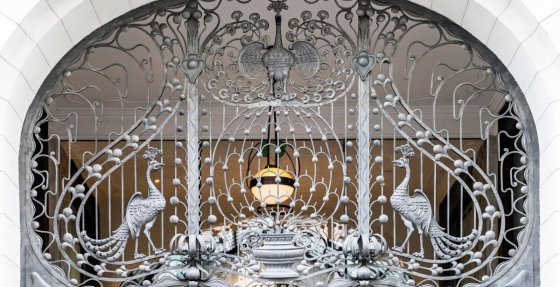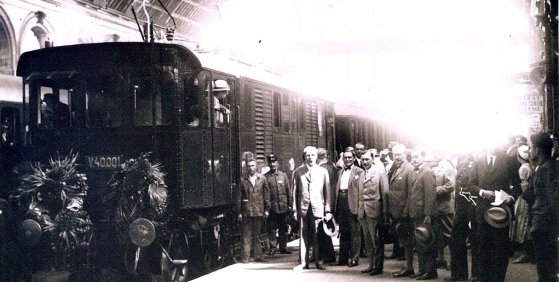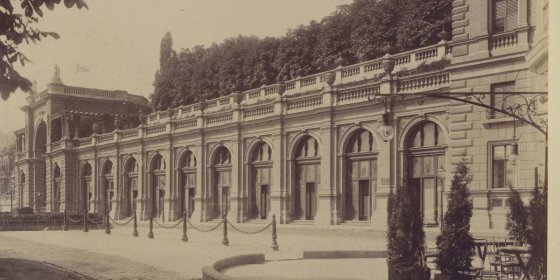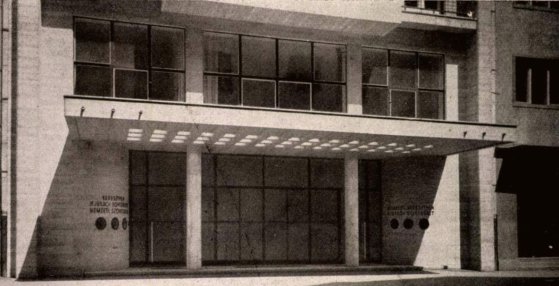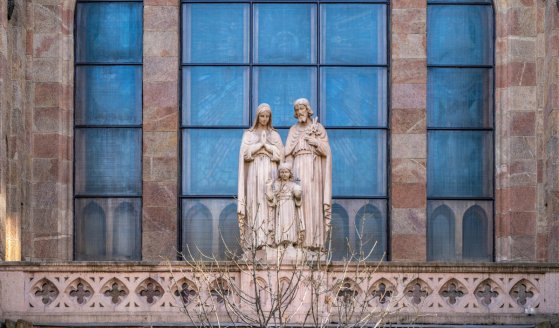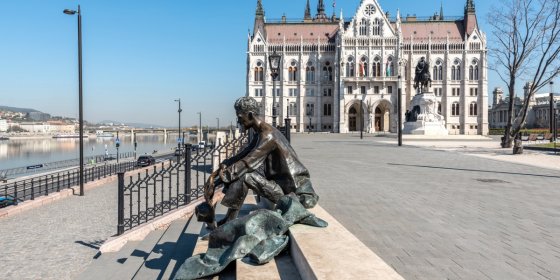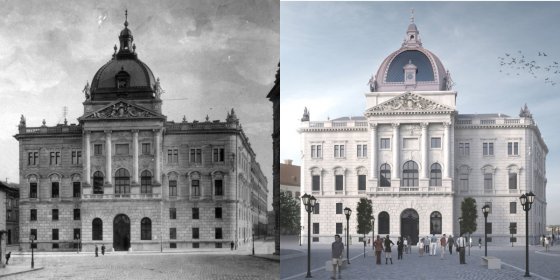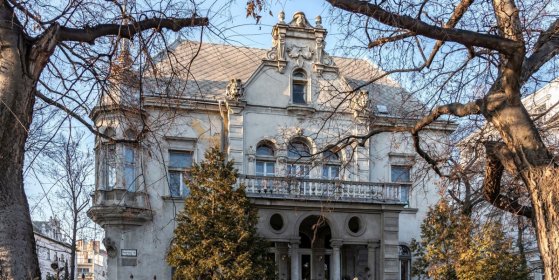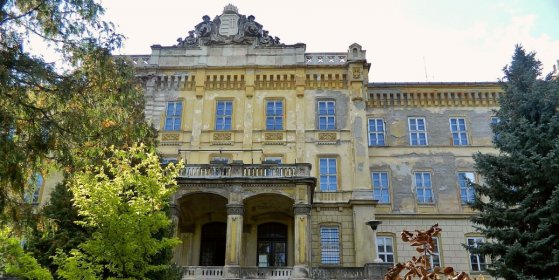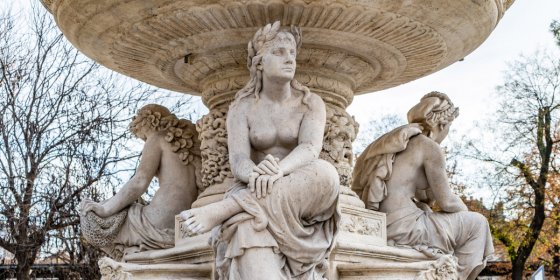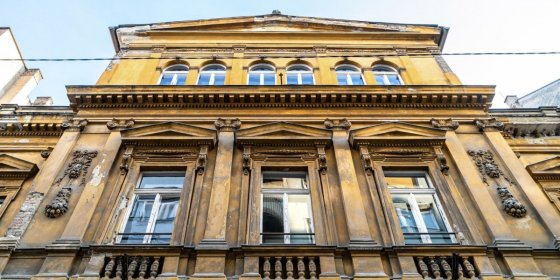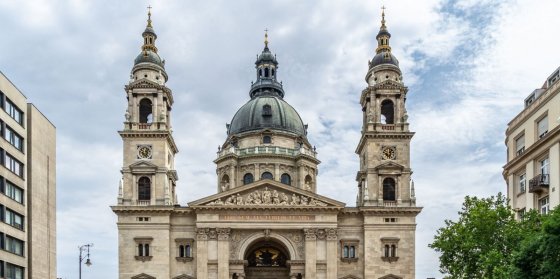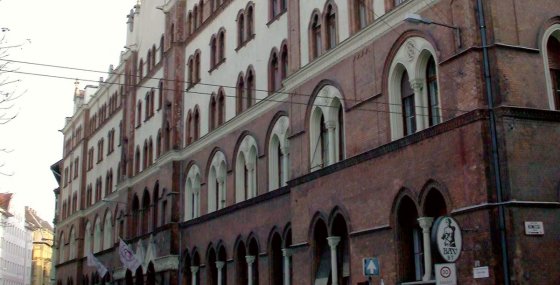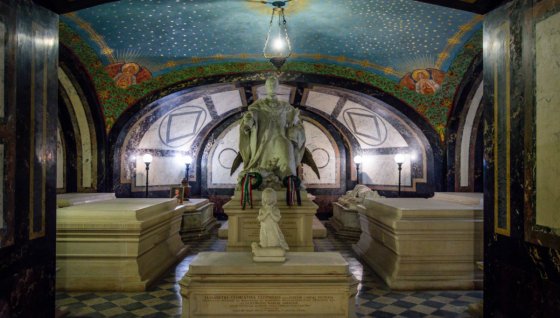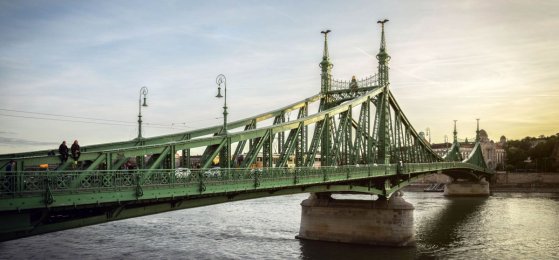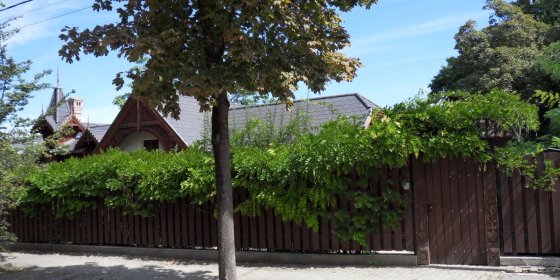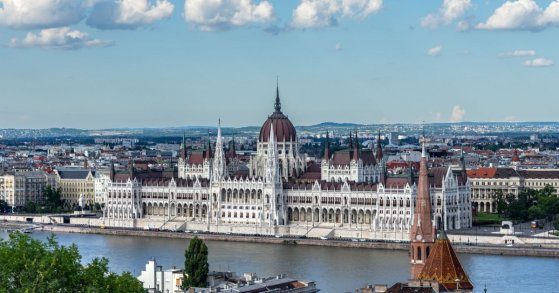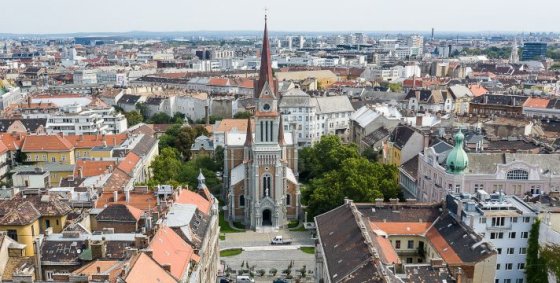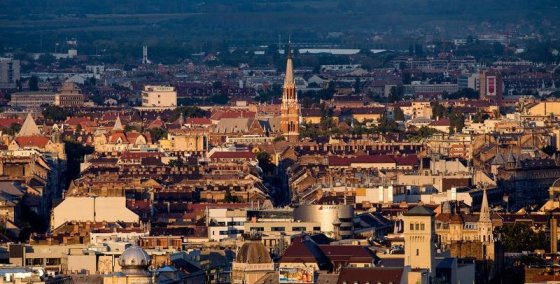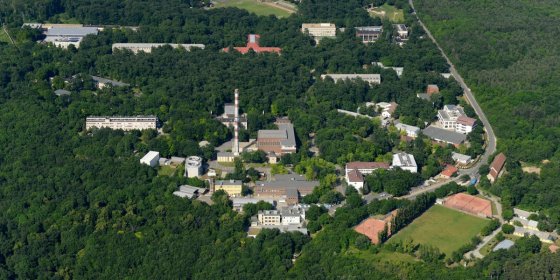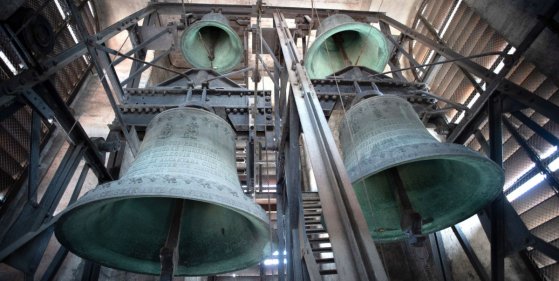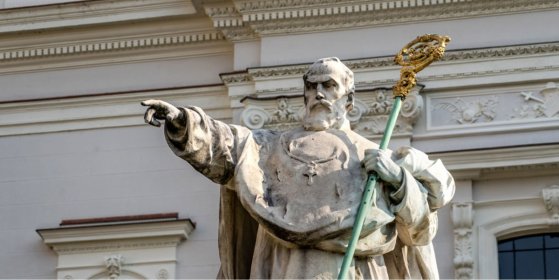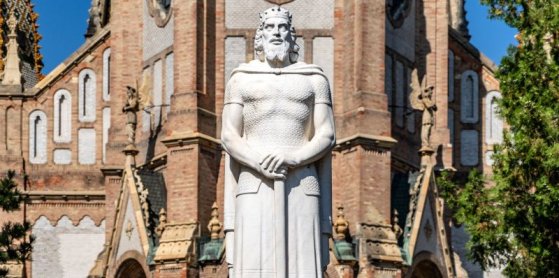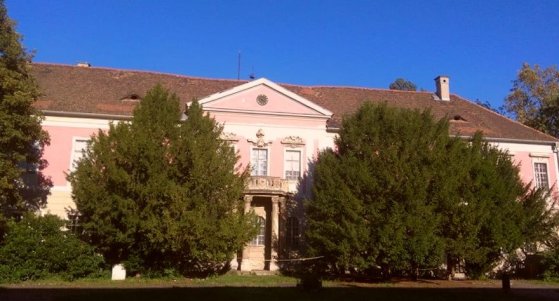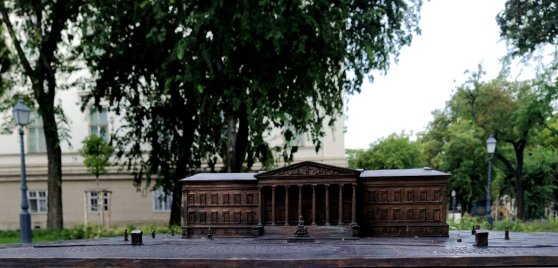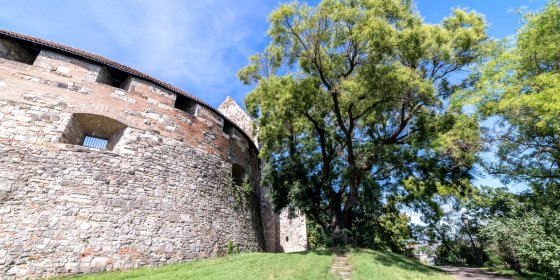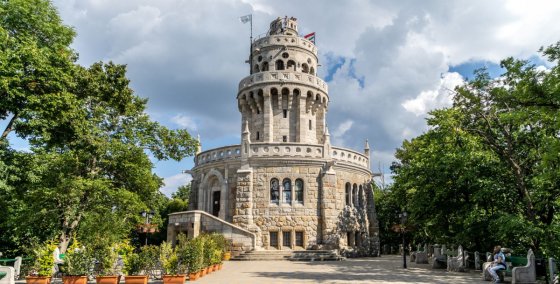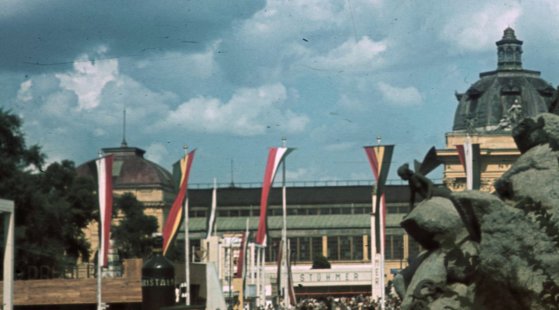 The „intertwined history” of the bridges and the city of Budapest
Which ideas and events have shaped the fate of bridges of Budapest and the cityscape? Alongside many other interesting facts, this question is also answered this newly published book by the Budapest City Archives, which introduces the history of bridges in Budapest.
The „intertwined history” of the bridges and the city of Budapest
Which ideas and events have shaped the fate of bridges of Budapest and the cityscape? Alongside many other interesting facts, this question is also answered this newly published book by the Budapest City Archives, which introduces the history of bridges in Budapest.
Heritage
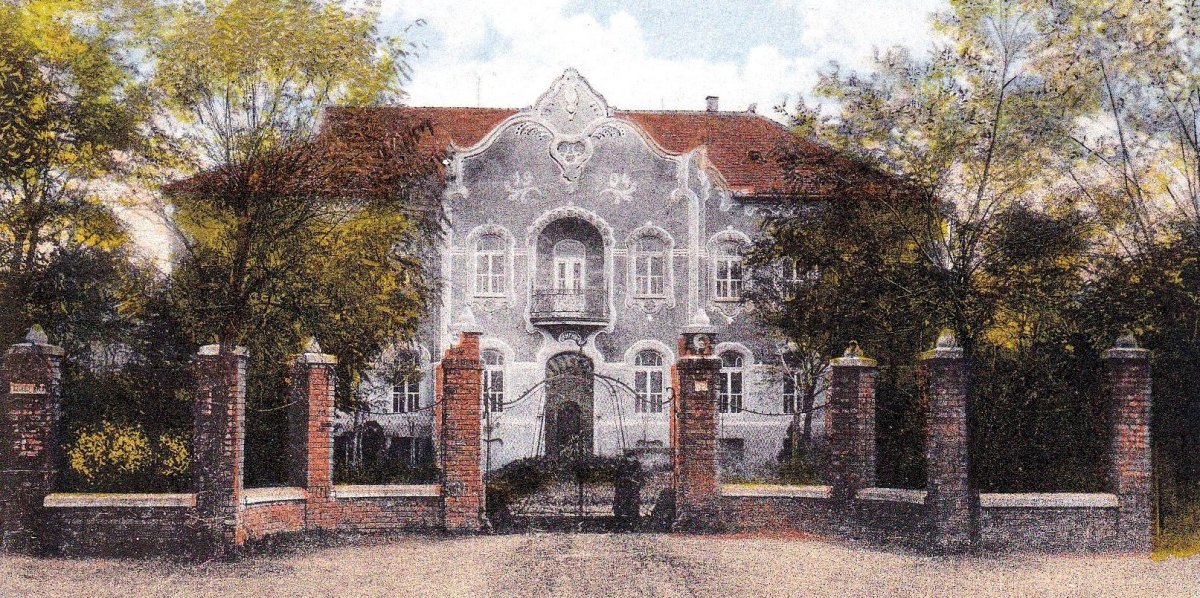 Sanatorium, hospital and military installation – Art nouveau North Pest Hospital awaits rescue
Sanatorium, hospital and military installation – Art nouveau North Pest Hospital awaits rescue
February 9, 2021 at 10:00 AM
When completed in 1903, the North Pest Hospital – part of Pestújhely at the time – was the only Art Nouveau hospital complex in the country. Opening as the Niedermann Sanatorium, the building later housed a workers' hospital and then became a military complex used by occupying Soviet forces. It was used as the central health institution to serve soldiers stationed in Hungary. The Art Nouveau main building now provides specialist care for outpatients, but most of the more than thirty structures are unused, abandoned and dilapidated – despite nine of them being listed historical monuments.
A master of beautiful gates – Works by Gyula Jungfer adorn public buildings around Budapest
January 20, 2021 at 10:00 AM
A walk around the representative public buildings of Budapest is almost a walk to visit the major works on GyulaJungfer. The artist that reimagined ironworking in Hungary and elevated it to an applied art was born 180 years ago. His work still defines Budapest.
The brilliant Kálmán Kandó – One of Hungary's greatest design engineers
January 16, 2021 at 12:00 PM
Kálmán Kandó, the enormously talented design engineer of Ganz Works, died ninety years ago. High-efficiency generators, transformers and electric motors were the results of his work. His efforts made electric power much more efficient.
Franz Joseph supported exhibition to showcase the most famous Hungarians
January 15, 2021 at 11:00 AM
A long-awaited exhibition opened in the Castle Garden Bazaar 135 years ago. Entitled Portrait Gallery of Hungarian History it collected depictions of the most famous Hungarians in chronological order. The effort was supported from the highest levels, and its creation was seen as not only a cultural but academic endeavour.
Building of the University of Theatre and Film Arts was once owned by the YMCA
January 14, 2021 at 12:00 PM
The buildings of Budapest hide many secrets. At times, the city can even surprise those who have been researching the history of its buildings for years. In many cases, plaques placed on facades commemorate or highlight interesting details from their history. One such plaque can be found on the facade of 2/C Vas Street, the building of the University of Theatre and Film Arts. The text encourages passers-by to dig a little deeper into the structure's history, by noting that a church once stood within the walls.
Churches of the Holy Family call the faithful in both Buda and Pest
January 13, 2021 at 1:00 PM
On 27 December last year, Pope Francis announced in Rome that the Catholic Church will celebrate a special year dedicated to family love, beginning on 19 March 2021. Discussions about the concept of a family have recently brought the issue to the front of public debates, making the Year "Amoris Laetitia Family" a particularly well-timed initiative in the country. Currently, three churches in Budapest are dedicated to the Holy Family, reminding the faithful that family appeared as a fundamental value and a natural element of human existence at the beginning of Christianity. In preparation for the year of the family, Pestbuda visited the Churches of the Holy Family in Zugliget and Terézváros.
Statue of Attila József unveiled on Kossuth Square 40 years ago
December 29, 2020 at 9:00 AM
A few years ago, the temporary removal of the Attila József statue – erected in 1980 on the site of the former Andrássy monument – from Kossuth Square due to the area's renovation caused an enormous uproar. Many believed that the work had been removed permanently. But a few months later, the statue was on Kossuth Square again. Although it was not put back in its original place, many say it found a better place only a few metres away, on the riverbank.
Rebuilt Headquarters of Hungarian Defense Forces will act as gate to the Palace of Buda Castle
December 22, 2020 at 9:00 AM
One hundred and twenty years ago its massive dome was the pride of Dísz Square. However, for the last 70 years, the military headquarters' partially deconstructed remains have lacked form and function. However, this is set to change. After a partial renovation between 2012 and 2014, its continued reconstruction will begin next year, restoring the building to its former glory, and serving visitors to Buda's Castle District.
A gem on Andrássy Avenue – The Bulyovszky Villa
December 12, 2020 at 6:00 PM
Elegant and spectacular villa buildings line Andrássy Avenue, one of them is the Bulyovszky Villa. The villa was built as a summer house for the famed actress Bulyovszky née Lilla Szilágyi and designed by the young Sándor Fellner. Standing on the corner of Rippl-Rónai Street, the building recently reemerged into the spotlight. The 55% share of the property'S ownership rights, held by the Hungarian Women's Association was put up for auction. The process was suspended in early December, and the Hungarian Women's Association sold its share. The ill-fated villa has thus entered new ownership. Making this the best moment to dive into its past.
New life for former psychiatric hospital in Lipótmező
December 11, 2020 at 3:00 PM
Plans to create a five-year, international boarding secondary school in the building that once housed the National National Institute of Psychiatry and Neurology in the 2nd District have been slated. The building will remain state-owned. The building on Hűvösvölgyi út was built as a mental asylum in 1868 and was closed in 2007. It has been empty since.
Renovation of Danubius Fountain Completed – Footless Szava restored
December 9, 2020 at 2:00 PM
One of the most beautiful and largest fountains in Budapest, the Danubius Fountain on Erzsébet Square, has undergone a comprehensive renovation in recent months. Its stones have been cleaned, missing parts replaced, and even worn gilding replaced.
Sports in 19th century – National Gymnasium turns 150
December 4, 2020 at 3:00 PM
One hundred and fifty years ago, a gymnasium was built in Budapest, a building that still stands on Szentkirályi Street. However, it is not quite like modern sports halls. From the outside, it looks just another palace. Only a small plaque reminds passers-by that it was once built as the National gymnasium in 1870 following the Austro-Hungarian compromise, during Gyula Andrássy's term as Prime Minister. This is what a gymnasium was like at the time: it looked like a palace and housed not only three halls and dressing rooms, but space for the community to live its life. While the rooms are now used for university education, the sports halls still serve their original function.
Fifty years of construction – Saint Stephen's Basilica opened 115 years ago
December 1, 2020 at 3:00 PM
St. Stephen's Basilica is the largest church in Budapest. Today, it is one of Budapest's most famous monuments of the capital, thanks to the work of Miklós Ybl. However, it also features prominently in the oeuvre of two other architects: József Hild started its design, while József Kauser finished its construction. Construction lasted an astounding 55 years, and the church was finally consecrated 115 years ago, on 19 November 1905.
From pawn shop to University – Construction of the Central Pawnbroker Offices began 120 years ago
November 30, 2020 at 10:00 AM
A huge building on Lónyay Street has stood empty for fifteen years. It has been unused for so long that most passers-by will not even remember its name. Yet for more than a hundred years, it was the centre of trading in pledged goods. Over the past years, there have been plans to build a hotel in the walls, films have been shot within them, and there were fears that it would be demolished. In the end, this beautiful example of turn-of-the-century architecture is being saved.
The most Hungarian Habsburg rests in Buda Castle – A visit to the Palatine Crypt
November 14, 2020 at 9:00 AM
A lesser-known segment of the vast Royal Palace of Buda Castle has housed the final resting place of the Palatine-branch of the House of Habsburg since the Hungarian National Awakening and the Reform Period. The crypt of the Habsburg palatines has remained almost unchanged since the 19h century. Few know that a Habsburg was buried in the crypt in the 2010s. Pestbuda visited the stunning site as part of a tour organised by the National Hauszmann Program before the restrictions announced on 10 November, limiting events entered into force. Join us on a visit to the crypt of the Royal Palace of Buda Castle.
The English edition of PestBuda magazine now live
November 13, 2020 at 2:00 PM
The PestBuda urban history magazine is launching an English edition to provide meaningful information and quality articles to internationals living, working or studying in Hungary, and the descendants of Hungarians around the world who no longer speak Hungarian, about the rich urban heritage, culture and often surprising history of Budapest.
Green Liberty – The decision to repaint Szabadság Bridge to its original green was reached 35 years ago
October 17, 2020 at 11:00 AM
Following a tragedy in Vienna, abridge renovation project was launched in Budapest in 1979. Szabadság Bridge was slated for renovation in 1981, however, was eventually prioritised due to urgent work. Despite this, the bridge was closed again in 1985, as the original steel support columns had been corroded so significantly they became unstable. However, during this second renovation, the decision to repaint the bridge to its original green was also made.
A Székely gate on Sas Hill
October 15, 2020 at 12:00 PM
István Benedek, the renowned 20th-century writer, doctor, psychiatrist and public figure was the son of the great Székely storyteller Elek Benedek, and both of them remain household names in many Hungarian families to the present day. Beyond his books, István Benedek is memorialised by a Székely gate that he carves himself, and erected before the villa he lived in from 1957. Interestingly, the house itself was built by the well-known bookbinder Nándor Gottermayer.
Parliament or Palace? – Construction of the Hungarian parliament began 135 years ago
October 12, 2020 at 5:58 PM
On 12 October 1885 150 workers began to dig a 40,000-cubic-metre pit. With this construction of the Hungarian parliament building began based on plans drawn by Imre Steindl. Lasting nearly two-decades the project transformed a neglected, to-be-developed part of the city, Tömő tér, into one of the most symbolic places in the country.
A place of beauty in the heart of the city – 225 years of Bakáts Square
October 10, 2020 at 12:00 PM
There are few places in modern Budapest where the defining institutions of community life can be found side by side. There may not even be such a place any more. Nevertheless, one-hundred or one-hundred and fifty years ago people believed it was vital that they not have to cover large distances to go to church, drop their Children of at school, reach a hospital quickly or sort official matters out. It was best, if church, school, hospital, administrative offices or maybe even a cinema or social club could be found nearby. Bakáts Square was just such a place.
Zugló turns 85 – A district of palaces, villas and housing estates
October 9, 2020 at 3:00 PM
Established ninety years ago, Zugló became an independent district 85 years ago. The 14th District connects the city centre with the outer parts of the city, and its role is reflected in its architecture. Beautiful villas built by artists stand alongside stunning school buildings, monuments and the headquarters of various institutions in the styles of historicism and Art Nouveau and these were joined in the 1970s by housing estates.
Founded 70 years ago the KFKI served as a meeting place for Nobel laureates
October 8, 2020 at 2:00 PM
The Central Physics Research Institute, KFKI was established in Csillebérc seventy years ago. Near Normafa the institution quickly became a central location of scientific and academic life in Hungary and was visited by several Nobel Prize-winning researchers. The first nuclear reactor in Hungary, which is still operational, was built here, and the Pille radiation dose meter was also developed on the campus. Scientists awarded by NASA have also worked within its walls. Divided into several divisions after the end of socialism in Hungary, Csillebérc still houses committed researchers.
Master bell founder Laszlo Szlezák born 150 years ago
October 6, 2020 at 3:00 PM
László Szlezák is possibly one of the best-known Hungarian bell-founders. He came to Budapest at the age of 14 and cast beautiful bells for churches throughout the city. Several of them can still be seen, for example in the Reformed Churches in Angyalföld and on Városligeti Avenue, on Ferenciek Square, in the Catholic Church on Haller Street, and the Kőbánya Church designed by Ödön Lechner. His largest and most famous work, the 7945 kg Saint Emeric bell cast for Saint Stephen's Basilica was destroyed in the Second World War.
Péter Pázmány never visited Budapest – Born 450 years ago the prelate remains a symbol of Hungarian unity
October 4, 2020 at 9:00 AM
When in 1635 Péter Pázmány founded the first University in Hungary – the successor of which operates in Budapest today – Buda and Pest were occupied by the Ottomans. Thus, one of the greatest figures of Hungarian baroque literature, and a leading figure of Hungarian Catholicism, never visited what is today Budapest. Nevertheless, two universities in the capital vie to preserve his memory. Several statues and other works of art depict him around the city, emphasising how the life's work of this Hungarian prelate is unavoidable in public life, education, culture and religion.
Kőbánya pays its respects to King Saint Ladislaus
September 27, 2020 at 10:00 AM
Before the stunning church planned by Ödön Lechner in Kőbánya stands a statue of King Saint Ladislaus. The district also houses not only a church, but a respected secondary school, a primary school and a square that bare the name of the saint king. As the cult of Saint Ladislaus is uniquely strong in this part of the city, the district was gifted the statue of saint in 1940, when the nation commemorated the 900th anniversary of his birth. The statue by Károly Antal, was erected before the church as the public sculpture of the king to be placed in Budapest.
The baroque splendour of Óbuda – A palace visited by Maria Theresa
September 26, 2020 at 6:00 PM
The Zichy Palace on the main square of Óbuda (Fő tér) once housed a luxurious lifestyle. The building's baroque splendour, ornate gates, large interiors, its ballroom, billiard room and shooting range, alongside its garden with fountains and exotic plants guaranteed both entertainment and rest. Even Queen Maria Theresa visited the famous palace, where concerts and theatrical performances were commonplace, and even the count himself acted. What has remained of the legacy of the Zichy family?
A place of secrets – A visit to the garden of the National Museum
September 20, 2020 at 12:00 PM
The Night of Artefacts was held this week in Budapest, Between 17–19 September. As part of the event, a walk entitled The Secrets of the Museum Garden was led by Béla Debreczeni-Droppán in the garden of the National Museum.
A Garden for Kings – The oldest trees of Buda Castle each have a story to tell
September 19, 2020 at 10:00 AM
Standing mementoes of the lost glory of royal gardens the old trees of Buda hold something of the Castle's history. The Japanese pagoda trees, fruit-bearing fig-trees, stunning oaks, lindens and planetrees, or mulberry trees from a time when Hungary produced silk, all have stories to tell. But they do need some help...
Queen Consort Elizabeth and the most beautiful lookout tower in Budapest
September 8, 2020 at 9:00 AM
The Elizabeth Lookout Tower atop János Hill in Budapest was opened with much ceremony 110 years ago. The tiered, cylindrical tower of snow-white limestone has since then become an unmatched staple of the Buda Hills, as it is visible from large swathes of the city. The present form of the lookout tower should be attributed to Frigyes Schulek. To honour the tower's anniversary, we have collected various images and stories from its past.
Red, yellow, green – The colours of Budapest
August 27, 2020 at 5:00 PM
Ninety years ago, on 20 August 1930, new flags decorated the streets of Budapest. The red-yellow-green tricolour replaced the red-yellow-blue colours in use since 1873. Ten years after Trianon, Act XVIII of 1930 detailed changes to Budapest's flag and coat of arms. One of the reasons behind the change was that the colours of the old Budapest flag and the Romanian flag were the same, but adding the traditional colour of green, Buda to the symbols of the capital was also an important factor.
More articles
 The „intertwined history” of the bridges and the city of Budapest
Which ideas and events have shaped the fate of bridges of Budapest and the cityscape? Alongside many other interesting facts, this question is also answered this newly published book by the Budapest City Archives, which introduces the history of bridges in Budapest.
The „intertwined history” of the bridges and the city of Budapest
Which ideas and events have shaped the fate of bridges of Budapest and the cityscape? Alongside many other interesting facts, this question is also answered this newly published book by the Budapest City Archives, which introduces the history of bridges in Budapest.
 The Bridge Report, which brought a turning point in the history of Budapest
A travel report that changed the history of Pest and Buda, as well as Hungary. The little book contributed to the change of half a thousand years of legal customs and the implementation of an investment of unprecedented size and technical quality. This book was The Bridge Report [Hídjelentés in Hungarian].
The Bridge Report, which brought a turning point in the history of Budapest
A travel report that changed the history of Pest and Buda, as well as Hungary. The little book contributed to the change of half a thousand years of legal customs and the implementation of an investment of unprecedented size and technical quality. This book was The Bridge Report [Hídjelentés in Hungarian].
 Drama on the university wall - The heroic monument was planned 95 years ago
In the constant hustle and bustle of the Egyetem Square in Pest, the students may not even notice the monument that decorates the short section of wall between the church and the central building of ELTE. However, it commemorates their predecessors, the heroes who fought for their country in World War I, and those who heroically helped them. The first design of the dramatically collapsing soldier was born in 1928, ninety-five years ago.
Drama on the university wall - The heroic monument was planned 95 years ago
In the constant hustle and bustle of the Egyetem Square in Pest, the students may not even notice the monument that decorates the short section of wall between the church and the central building of ELTE. However, it commemorates their predecessors, the heroes who fought for their country in World War I, and those who heroically helped them. The first design of the dramatically collapsing soldier was born in 1928, ninety-five years ago.

